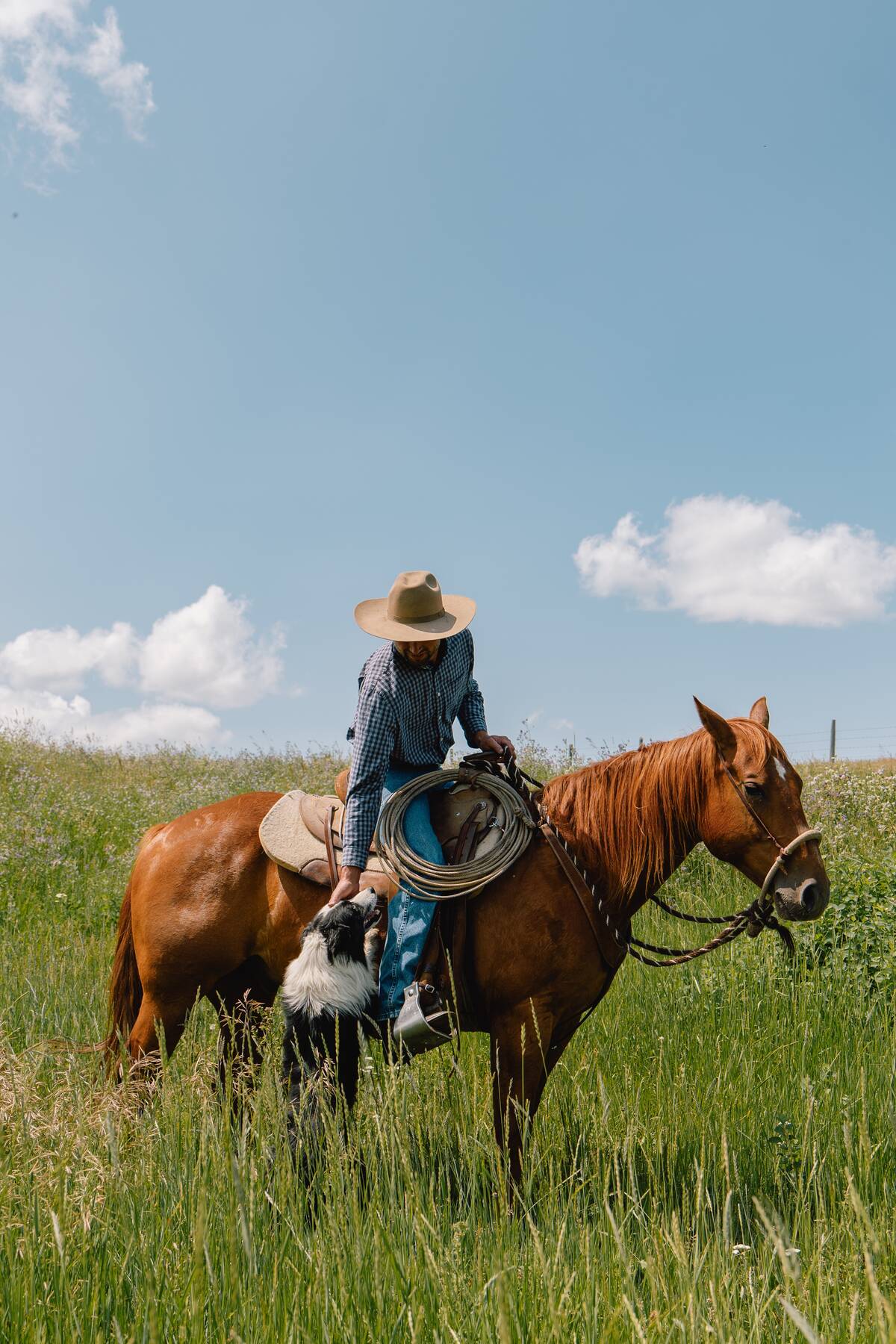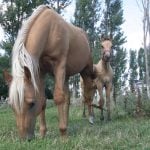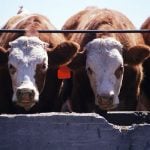Pesticides are important tools available to control undesirable species on pasture and cropland. Herbicides, fungicides and insecticides can boost forage or crop yields and reduce toxic or unpalatable weeds in a stand. However, producers must pay attention to pesticide labels to avoid risks to food safety and animal health and performance. (see pesticide record sample further down)
Most producers are familiar with withdrawal times for veterinary products such as antibiotics. Pesticides also have restrictions on how they can be used safely without leading to chemical residues in beef. The pesticide type, application rate, plant species targeted, weather conditions and numerous other factors can alter the guidelines for safe livestock feed production. Luckily, VBP+ has resources available to guide producers through the important information found on pesticide labels.
Date(s) are a starting point to track when a product was applied to a certain area. Product labels on herbicides and other pesticides will identify rest times without grazing in terms of the number of days. So, producers must know when a product was applied to calculate when grazing or harvest can occur.
Read Also

Regenerative ranching sees Alberta family through three decades of ups and downs
Alberta ranchers have found regenerative ranching key to surviving ups and downs of the business
The field identification or location column allows the producer to track pesticide use across multiple locations to optimize their use of the land available to them. Producers use different pesticides depending on the intended use (e.g. hay vs. grazing), pest type and plant species present. For operations with varied land profiles, keeping a record of the different products used in each location takes the pressure off a producer’s memory to ensure food safety.
Recording the product used directs the producer to the appropriate information to complete the subsequent columns. Writing down the brand name of the product helps readers verify the safety precautions documented in the final columns and reminds the producer where to find the details to fill them. The brand name is important because various companies may produce similar products with the same primary chemical agent that have different guidelines for use. With additional research, label guidelines can change over time, so this column should not be used as a reference point for future records.
Rate of application and acreage are important reminders for the producer. From a safety perspective, these columns prompt a calculation of the amount of pesticide needed according to the area being treated and the rate indicated on the product label. Ideally, producers will start looking at a pesticide use record before application to choose appropriate products and adjust their grazing and harvest plans according to withdrawal times. In turn, identifying the rate and acreage can help a producer plan how much product they need to purchase and account for costs ahead of time.
The last two columns of the record involve two commonly confused terms. The safe-to-harvest/graze time period refers to how long you must wait after application before either harvesting or grazing. This information comes directly from the product label and can vary depending on the type of feed treated and other factors. After recording the date of application and the safe-to-harvest/graze period, producers can calculate the date of harvest or turnout to plan accordingly for feeding needs.
The withdrawal period refers to the time before shipping that cattle must be removed from a pasture. For example, a product label might direct producers not to harvest treated grass as hay for 30 days after application and to remove cattle from a treated pasture at least three days before shipping. In this case, the safe-to-harvest period would be 30 days, while the withdrawal period would be three days.
Comments capture risk information. In the sample record, a producer has indicated that cattle won’t be turned out onto the pasture until the next year, well past the safe-to-graze period.

While this record template records key details on pesticide labels, there are a few other major considerations for beef producers concerning pesticide use. Last summer’s drought in Western Canada pushed many producers to work with neighbouring farmers to salvage crops. However, to prevent animal health and food safety hazards, livestock managers need to verify that the pesticides applied to a crop can be safely used on feed crops and adhere to safe-to-graze/harvest and withdrawal times. As well, much like using an animal health product off-label, adverse weather conditions such as drought can change grazing and harvest guidelines for a pesticide. While product labels cannot account for every variation in weather, producers can contact the product representative in their area to get recommendations on safe use.
Finally, beef producers know to expect the unexpected when cattle are involved. Sometimes fences break and mistakes are made, but producers can still maintain high standards for food safety. If cattle accidentally access treated feed outside of usage guidelines, producers can contact their veterinarian to reach out to the Canadian Global Food Animal Residue Avoidance Databank (CgFARAD). The veterinarian can then advise the producer as to how to proceed according to advice from CgFARAD on how the product’s behaviour in the animal’s body will differ from the situation described on the label. To help guide producers through this process, VBP+ also has a Toxin Exposure record available under the Producer Resources tab at www.verifiedbeef.ca.
Herbicides, fungicides and insecticides are important elements in a producer’s feed management tool kit. This record can help producers reap their benefits while optimizing animal performance and maintaining consumer confidence in Canadian beef as a safe and nutritious part of a healthy diet.
Emma Cross is a student at the University of Saskatchewan and works for Verified Beef Production Plus in communications. She also runs a purebred Hereford operation out of Tofield, Alberta, and is the current president of the Canadian Junior Hereford Association.
















